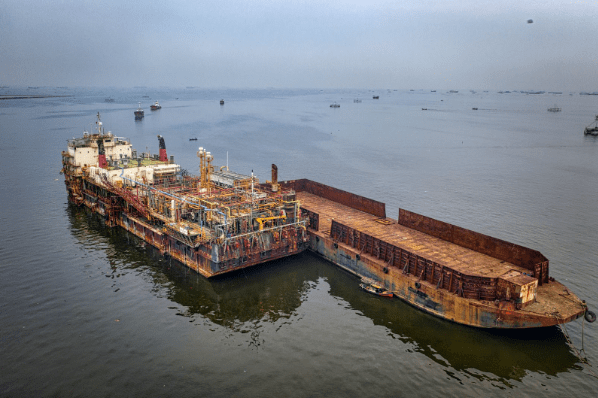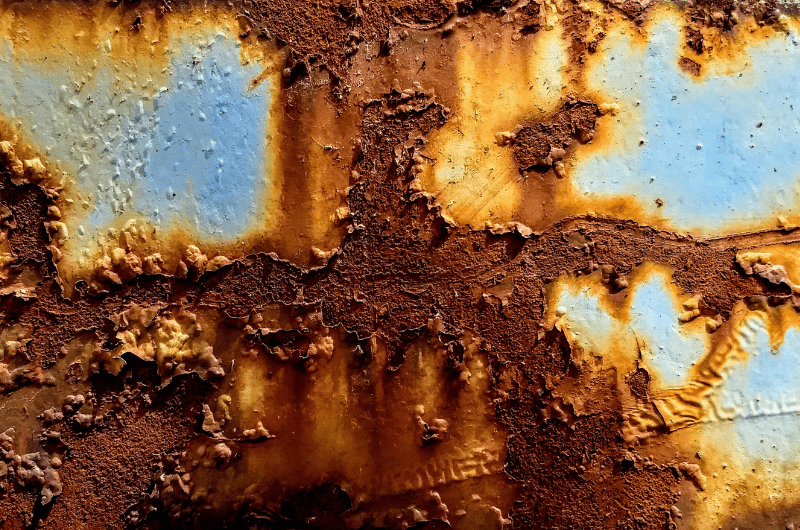Offshore Oil operations are constantly threatened by an inevitable factor: Corrosion. Heavy corrosion damage can lead to extended unplanned shutdown times, decreased safety, and increased environmental exposure. This is why Oil and Gas companies struggle with traditional Corrosion Management methods becoming obsolete.
However, corrosion management isn’t an easy task, involving locating, prioritizing, and treating corrosion signs along +300,000m² areas. Besides that, while operations need to execute interventions, they need to deal with limited maintenance time, budget constraints, and costly downtime. For this reason, the sector’s complexity requires an alternative method of addressing corrosion.
The Importance of Corrosion Management
Corrosion, the gradual degradation of metal structures due to chemical or electrochemical reactions with their environment, is a silent but aggressive threat that can compromise safety, maintenance planning, and asset integrity. Indeed, according to NACE Impact research, the annual global cost of corrosion stands at a staggering $2.5 trillion, equivalent to 3.4% of the worldwide GDP in 2013.
Beyond that, to maximize asset performance, companies need to manage equipment’s useful life-cycle and safety for operators in the field. And, while corrosion progression doesn’t stop, asset activities need to be paused to address degradation and anomalies. In this context, industries must adopt an optimized intervention strategy to reduce the cost of damage control and unexpected failures from corrosion.
Why traditional Corrosion Management methods are becoming obsolete

1. POB limitation
Addressing corrosion encompasses allocating dozens of professionals to inspect and execute coating in an inherently hazardous environment. As a result, companies have to deal with People on Board (POB) limitations, directly impacting the maintenance strategy and the capacity to solve occurrences rapidly. For this reason, Oil and Gas industries shouldn’t rely exclusively on manual inspections to achieve an optimized and accurate diagnosis.
2. Diffused Data
Industrial operations generate gigantic amounts of data, whether structured or not. In addition, each asset has its specific characteristics and safety standards, making data management from various sources a daunting task. In this context, companies must contextualize data in a unique channel to accomplish real-time monitoring of the operation’s integrity, performance, and environmental impacts.
According to Forbes, despite industries collecting vast amounts of data, 60% to 73% of this data is never successfully used for any strategic purpose. In this scenario, data contextualization comes as an opportunity for connecting different systems and making sure they can communicate and share data seamlessly. This approach delivers more organized workflows to operations of any scale.
3. Reduced Reliability
Reliability stands as a guarantee of the operation’s efficiency. It relates directly to an accurate corrosion management strategy, wherein traceable inspections ensure precise monitoring of the asset’s conditions and performance. For this reason, traditional methods are falling short in terms of accuracy, reduced downtime, and most importantly, reliability.
In this sense, non-optimized methods still rely exclusively on a series of robust documents for each asset. This scenario requires that the maintenance team consumes time relating tons of documents to comprehend the relation and scale of corrosion anomalies. Thus, usual approaches don’t allow a broad visualization of the
operation’s improvement points. In other words, only a centralized corrosion management system can indicate the best possible actions considering time constraints, budget, activity overlap, and POB limitations.
How Corrosion Management is being reshaped by AI
Despite addressing corrosion anomalies being a delicate activity, innovations like AI are reshaping how industries perform this task. Essentially, this tool increases uptime and reduces costs by providing data-driven insights. To do so, it considers thousands of variables that human planners might overlook, such as trade-off scenarios, conflicting equipment, and hard-to-reach corrosion signs. For this reason, we listed the main AI resources that are reshaping industrial maintenance:
1. Computer Vision
Computer vision represents the ability of a computer to see. It involves the development of algorithms, models, and systems that can analyze and process visual data, including images and videos, to extract meaningful information and make decisions based on that information. In this context, this technology has been setting the pace for anomaly detection accuracy.
This technology functions by capturing and analyzing images from the surrounding environment. The images are trained as information through visual refinement algorithms, where filters are used to enable the recognition of behavioral patterns in the images. This way, companies can easily identify minimum anomalies and address them before they turn into big problems.
The use of this technology reduces costs, downtime, and the number of people on board exposed to inherent risks. This integrated and flexible system provides faster solutions not only to corrosion management but also to asset integrity. Grand View Research reports the value of the global computer vision market is expected to reach $19 billion by 2027, up from just over $11 billion in 2020.
2. Prediction Models
Prediction models consist of algorithms that can foresee the behavior of certain assets in advance, allowing industries to make more informed decisions. It analyzes real-time and historical data to determine the asset’s degradation state over time. By adopting this methodology, industries can make more informed decisions and schedule maintenance at optimal times.
This tool allows maintenance teams to engage in more fact-based discussions, predict machinery failures, and compare the real impact of different parameters on business outcomes before making decisions. However, according to NetSuite, predictive models are not static; they are validated or revised regularly to incorporate changes in the underlying data. For this reason, all equipment data must be contextualized to an only channel.
For corrosion detection, predictive models precisely foresee the asset’s degradation state over the future years. Unlike human planners, this advanced analytics approach takes into account thousands of variables and constraints to help operators figure out what decision to make.
Conclusion
Traditional methods of corrosion management, reliant on manual inspections and disconnected data sources, are facing limitations that hinder their effectiveness. And, while addressing corrosion stands as a bottleneck to operations of all scales, companies must adopt optimized strategies to minimize failures and reduce unplanned downtime.
Beyond that, conventional corrosion management relies on manually inspecting entire assets and relating diffused data. As a result, industries are seeking new optimized ways of monitoring risk that contemplate time constraints, budget, and resource availability. By adopting new technologies, companies guarantee safer, cheaper, and more sustainable inspections.



